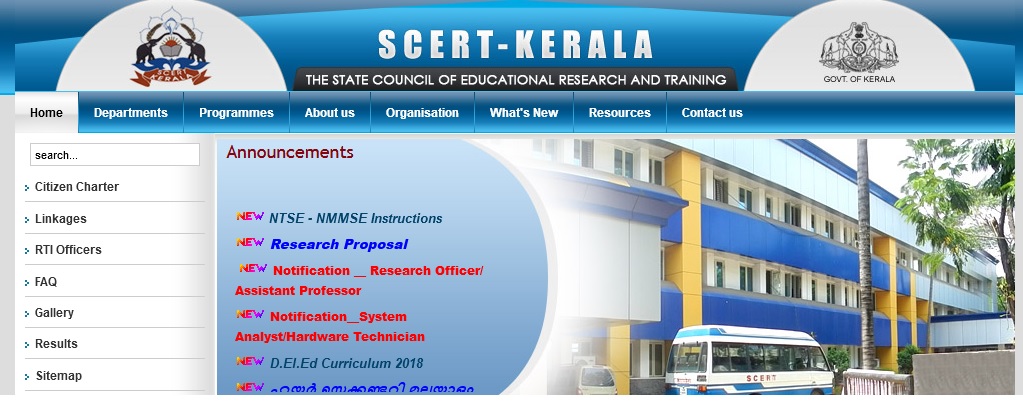SCERT Kerala Class XII History Sample Question Paper 2015
Organisation : State Council of Educational Research & Training
Exam : Higher Secondary Education Exam
Subject : History
Document Type : Sample Question Paper
Year : 2015
Class : XII STD
Website : http://www.scert.kerala.gov.in
Download Sample Question Paper : https://www.pdfquestion.in/uploads/8448historyXII.pdf
SCERT History Class XII Sample Question Paper
Maximum : 80 Score
Time: 2½ hrs
Cool off time : 15 mts
Related : SCERT Kerala Class XII Geography Sample Question Paper 2015 : www.pdfquestion.in/8445.html
General Instructions
** There is ‘Cool off time’ of 15 minutes in addition to the writing time of 2 hrs.
** You are neither allowed to write your answers nor to discuss anything with others during the ‘cool off time’.
** Use the ‘cool off time’ to get familiar with questions and to plan your answers.
** Read the questions carefully before answering
** All questions are compulsory and only internal choice is allowed.
** When you select a question, all the sub-questions must be answered from the same question itself.

** Calculations, figures and graphs should be shown in the answer sheet itself.
** Malayalam version of the questions is also provided.
** Give equations wherever necessary
** Only nonprogrammable calculators are allowed in the Examination Hall.
Model Questions
Answer the Question :
1. Write any two factors that led to the end of Harappan civilization (2)
2. Eventhough the inscriptions are a major source to reconstruct the history of ncient India, they have certain limitations. What are they? (2)
3. In ancient India varna and gender determined the access to property and thereby social status of the people. Evaluate the statement with suitable examples (3)
4. The stupas are considered to be an emblem of Buddha and Buddhism Why? ( 3)
5. Distinguish between Mahayana Buddhism and Hinayana Buddhism(2)
6. Find out the relationship of the two parts of item ‘a’ and fill in the blanks of item ‘b’ accordingly (4)
a) Al-Biruni : Kitab-ul-Hind
b) Ibn Battuta – ………………….
a) Durate Barbosa : Portuguese
b) Francois Bernier : …………………
a) Tevaram : Nayanars
b) Nalayira Divyaprabandham:……
a) Turushka : Turkey
b) Parashika : ………
7. why did the cities in the Indian subcontinent excite Ibn Battuta? ( 4)
8. Prepare a short note on the legacy of Kabir (4)
9. Mohenjodaro was a planned urban centre. Substantiate the statement with the help of the following hints. (8)
• Lower Town
• Domestic Architecture
• Drainage System
• Citadel
OR
The following map shows some important towns that emerged in ancient India from sixth century BCE onwards. Identify the locational factor that helped the growth of these towns and explain the development of trade during this time.
Areas to be considered :
• Trading Towns
• Urban Populations
• Internal and External trade
• Coins
10. Choose the correct answer from the given alternatives (4)
a) The ruins of Hampi were discovered by. (Colin Mackenzie, John.M.Fritz, George Michell, M.S.Nagaraja Rao)
b) During the Mughal Period, the Panchayat headman was known as. (Muqaddam, Patwari, Muzarian, Jangli)
c) Who is the author of Badshah Nama? (Abdul Hamid Lahori, Abul Fazl, Gulbadan, Begam, Dara Shukoh)
d) Who was incharge of revenue collection in mughal administration? (Qanungo, Chandhuri, Sadar, Subadar)
11. The nayakas and amaranayakas played a vital role in Vijayanagar administration. Do you agree with this statement? Substantiate ( 4)
12. Analyse the relationship between women and agriculture in medieval Indian society under the Mughals. (4)
13. Mention the peculiarities of the Humayun Nama written by Gulbadan Begam (2)
14. The Santhals revolted against native and foreign exploitation. Examine the validity of the statement (4)
15. Comment on the Fifth Report (2)
16. Name the following places and mark them on the outline map provided (4)
(a) The Kingdom described by Lord Dalhousie as a cherry that will drop into our mouth one day.
(b) The place where Nanasahid led the revolt
(c) The place where kunwar singh led the revolt.
(d) The place where the populace celebrated the fall of British rule by hailing Birjis Qadr as their leader.
17. Examine the role of rumours and prophecies in the revolt of 1857. (2)
18. Gandhiji made Indian freedom movement a popular movement. Elucidate the statement on the basis of non-co-operation movement. (8)
[embeddoc url=”https://www.pdfquestion.in/uploads/8448historyXII.pdf”]